Art in the wild
(8 minute read)
Land art, outdoor art, art without walls. Whatever you want to call it, the primitive urge to make your mark in wild and remote places spans millennia. But from the mysterious stone structures of the so-called “Borrowdale Banksy” to the world-class modern sculpture on show at Grizedale Forest, art in the wild is flourishing amongst the fells, valleys and crags of the Lake District. Lace-up your hiking boots and head to the hills with us for an exhibition like no other…
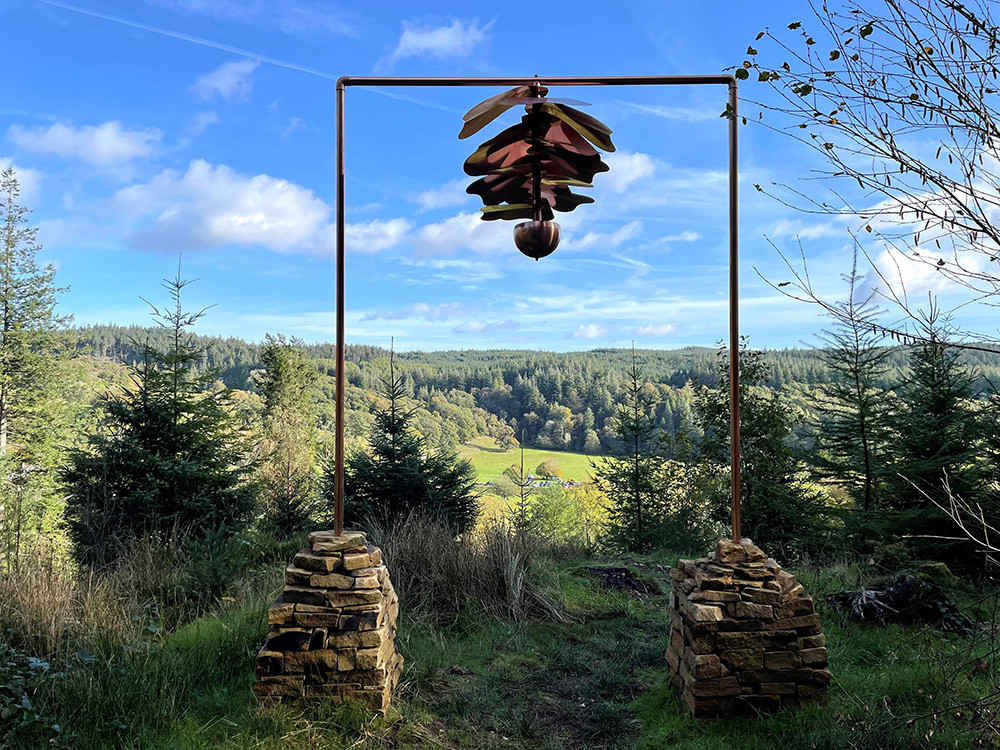
www.lakedistricttravelguide.co.uk
“Sculpture is an art of the open air,” wrote Henry Moore in 1951. “Daylight, sunlight, is necessary to it, and for me its best setting and complement is nature. I would rather have a piece of my sculpture put in a landscape, almost any landscape, than in, or on, the most beautiful building I know.”
Ageless and ever-changing, a wild landscape offers a raw canvas and unique natural plinth on which to admire art. And whether it’s the eminent land artist Andy Goldsworthy’s Sheepfolds – found dotted about the Cumbrian countryside – or Steve Messam’s bright red PaperBridge, the Lake District is home to, and has inspired, an impressive collection of outdoor art.
Not far from Coniston Water (and around an hour’s drive from Another Place), Grizedale Forest is the UK’s first sculpture forest. Since 1977, leading international artists have created work at and for the Forest, from David Nash to Yoko Ono.
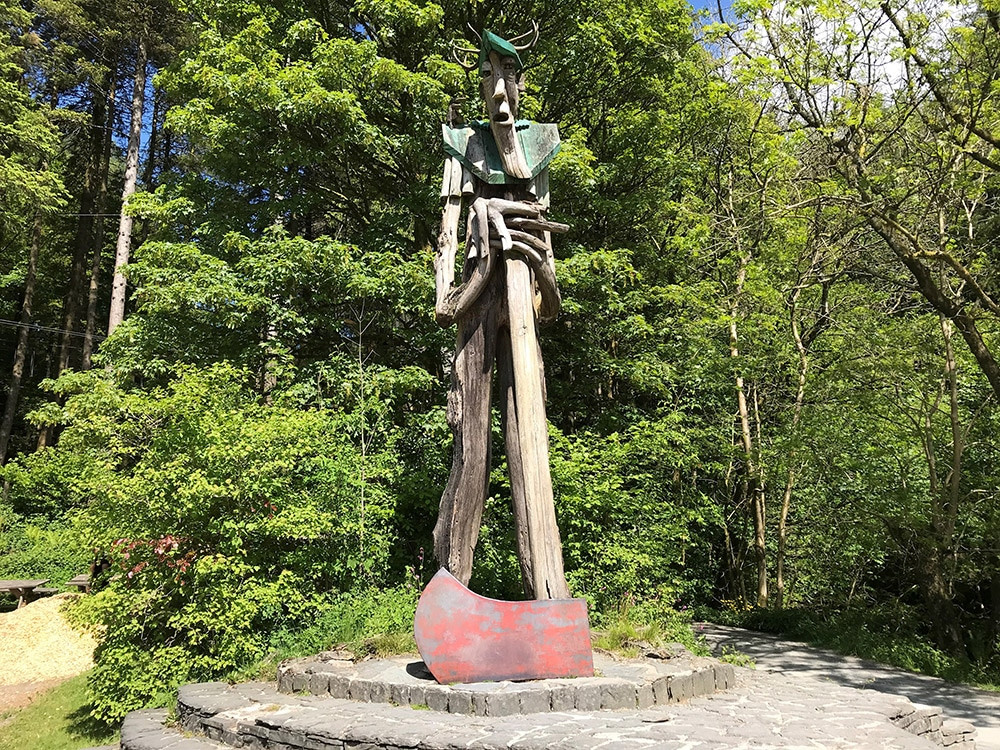
www.lakedistricttravelguide.co.uk
For Sheffield-born artist Steve Anwar, whose graceful steel sculpture Only Breath (created on Sky Arts’ public art series, Landmark), currently rests at Grizedale, the “breathtakingly rugged and dramatic” Lake District setting “gives the sculpture a sense of wonderment and freedom”. But the landscape also “encourages a state of slow reflection”.
“You can sit with the sculpture for as long as you like,” he says. “The restraints of human time don’t exist in nature.”

@sapien_studio
Art off the beaten track
Some outdoor art in the Lakes, like Andy Goldsworthy’s Sheepfolds, isn’t on the map at all, and must be stumbled upon or whispered directions.
“The audience for the Sheepfolds are people who pass and use the place all the time, or those who come into the place by accident,” said Goldsworthy. “I never mark my works on maps. People have to hear about them through word of mouth.”
The audience for the Sheepfolds are people who pass and use the place all the time, or those who come into the place by accident. I never mark my works on maps. People have to hear about them through word of mouth.
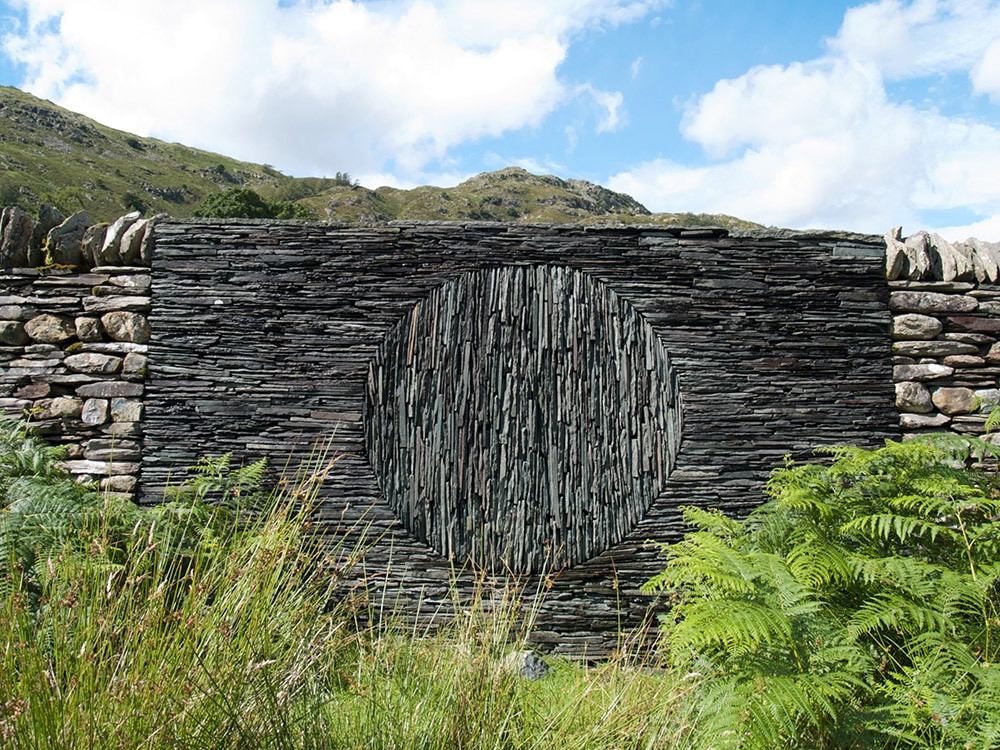
www.lakedistricttravelguide.co.uk
Described by William Wordsworth as “a perfect republic of shepherds and agriculturalists”, Cumbria contains hundreds of sheepfolds (used to contain sheep for washing, clipping and marking). Goldsworthy’s project, started in 1996, took ruined sheepfolds, restored them, and placed a sculpture of some kind inside – drawing our attention to the landscape and its heritage while revitalising it with fresh creative energy.
Another site-specific outdoor artwork with similar intentions, PaperBridge by Steve Messam was a weight-bearing bridge across a stream in the Lake District, built entirely from bright red paper made locally at Burneside Mill. With no glue or bolts to keep it together, Paper Bridge relied on the same principles used in drystone walls and the county’s original pack-horse bridges.

@rougeit
“PaperBridge is a temporary artwork made for and about the landscape of the Lake District,” wrote Messam in 2015. “On an aesthetic level, the piece acts as a focal point […] the bright red colour drawing the eye and interfering with the natural environment, while at the same time creating compositional balance with the green backdrop and flow of water. The Lake District has a long and important history in the perception of landscape and aesthetics. PaperBridge is seen as part of its continuing and evolving legacy.”
At the end of the installation, the bridge’s 20,000 sheets of Cumbrian paper were returned to Burneside Mill for recycling into new paper. “This transparent cycle is part of the overall environmental narrative of the piece,” explained Messam.
The Borrowdale Banksy
A quarter of a century after Goldsworthy began work on his sheepfolds, a new Lake District land artist was making their presence felt.
In 2021, impressive stone structures began cropping up on Cumbrian fells and crags courtesy of an unknown creator. Cloaked in mystery, locals began referring to the anonymous artist as the “Borrowdale Banksy”.
“I usually have mixed feelings about manmade structures like this in a natural setting; as climbers, we practise a minimal-impact approach,” said Carl Halliday, a local mountaineer whose photograph of one of the sculptures went viral. “But I have to say that this was different. It seemed sensitive to the existing environment and complemented the already stunning views.”

@danielleoakley928
I usually have mixed feelings about manmade structures like this in a natural setting; as climbers, we practise a minimal-impact approach. But I have to say that this was different. It seemed sensitive to the existing environment and complemented the already stunning views.
Admiring one of the forms – a statuesque slate arch framing the view over the Borrowdale Valley, Windermere-based sculptor Shawn Williamson described it as taking on “the lifeblood of the Lakes”. He told BBC Radio Cumbria: “This one really speaks of the Lake District and of all the traditional crafts. And it’s woven into the natural landscape, so it’s incredibly mysterious.”
Mysterious though they may be, the Borrowdale Banksy is simply the latest in a long line of sculptors and land artists working and exhibiting in the wild – a line that stretches far beyond the borders of Cumbria.
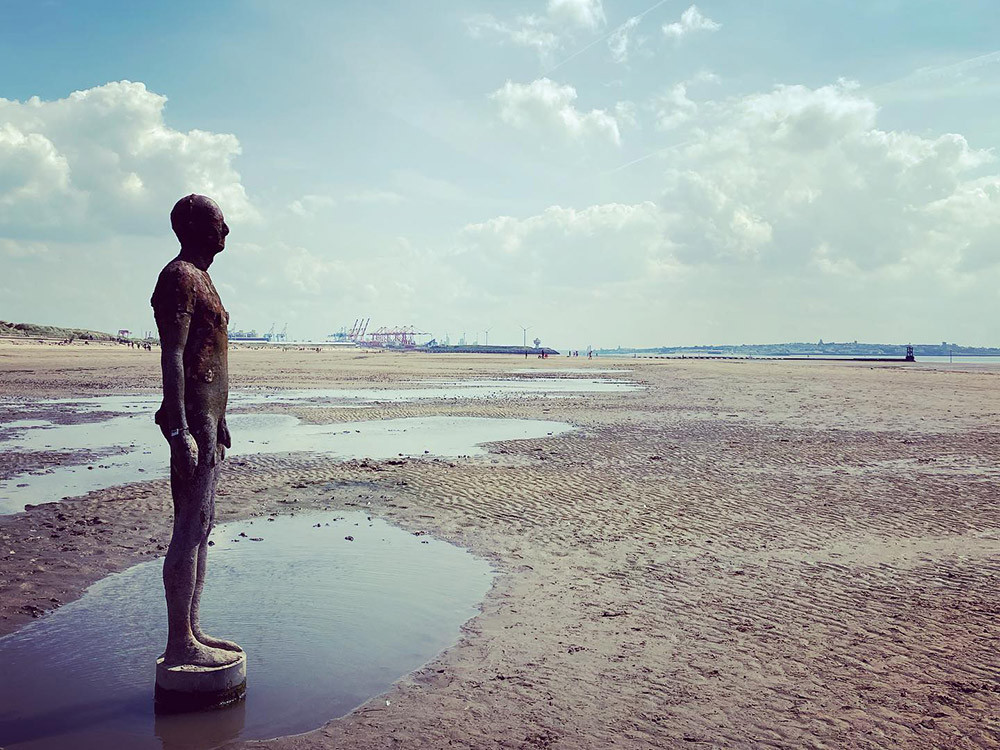
@teddydale
From Anthony Gormley’s silent figures to Ai Weiwei’s metal trees, Richard Long’s footstep markings to Barbara Hepworth’s organic forms, elemental artists have played with ideas of contrast and harmony within the environment for decades. Some works are intended to last for centuries, rusting and weathering as they mature, while others are made directly in the landscape and designed to melt back into the earth.
Shaped by nature
Whatever the setting – be it a sculpture park, deep in the woods or high on the moors, all outdoor art shares the same core experience of existing amongst the elements.
Worn smooth by the wind, washed by the rain, hammered by hail, sprayed by the sea and warmed by the sun, art in the wild is shaped and enhanced by its surroundings. The best outdoor art returns the favour for its setting, too, enlarging the spirit of a place and amplifying its effects on us.
Carved into the Pennine landscape by stone artist Pip Hall, Simon Armitage’s poems, the Stanza Stones, form a 50-mile trail from Marsden to Ilkley Moor. Each inspired by and named after a state of water, the Rain, Mist, Snow, Beck and Puddle stones are lapped by fast-running rivers, lashed by storms and slowly carpeted in lichen and moss. And that’s just fine by Armitage.
“Occasionally the volume of water means that the lower edges of the [Beck] poem are almost unreadable,” he writes. “And given the volatility of current weather conditions it’s possible that at some point the boulder itself will be rolled or flushed away. But that’s true of all the poems; they may well be written in stone but the element they describe will eventually render them mute.”
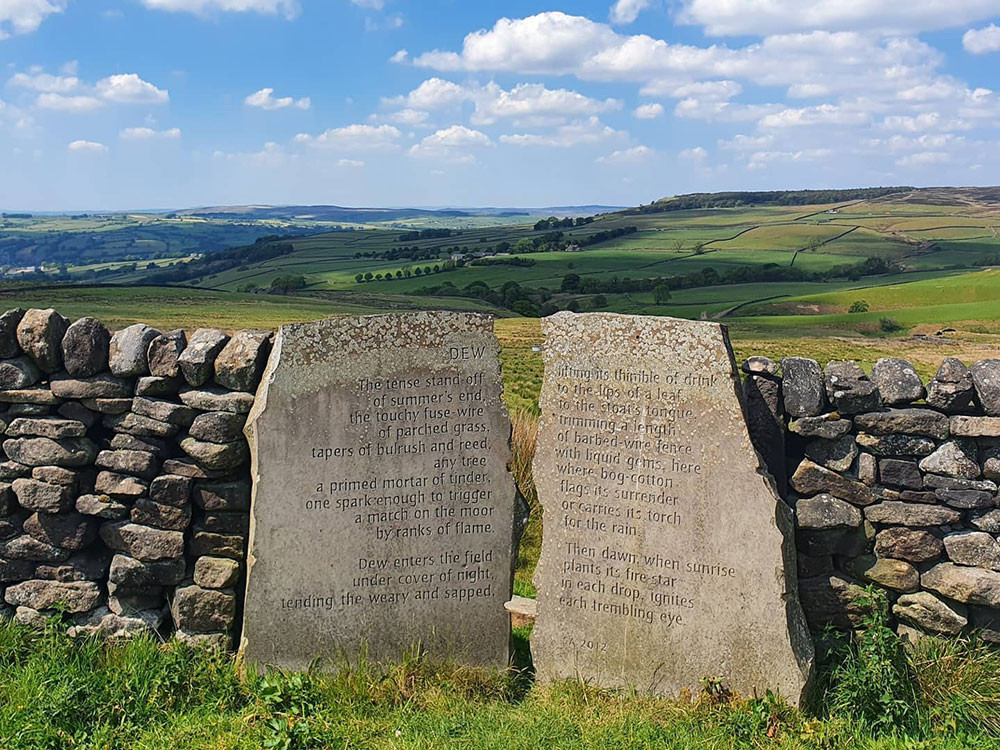
@smita_mathew
This transience is also inherent in Goldsworthy’s work. “Movement, change, light, growth and decay are the lifeblood of nature, the energies that I try to tap through my work,” he says. “Nature is in a state of change and that change is the key to understanding. I want my art to be sensitive and alert to changes in material, season and weather. Process and decay are implicit.”
Artfully weathered
Contemporary British painter and installation artist Anthony Garratt also thrives off the ever-present threat of the weather – and is philosophical about its effects on his work.
On the first day of painting his spectacular High and Low outdoor installation in Snowdonia, half of his canvas was unceremoniously washed away by the infamous Snowdon rain. “It is quite a demanding way to paint, because the weather dictates you – but that is also a nice message really,” he said. “We are continually reminded of the weather here – it is very volatile – very exciting.”
When you’re outdoors, the setting is an integral part of the artwork, you can’t separate the two.
One half of Garratt’s finished work floated on Llyn Lydaw lake, dancing in the wind and dwarfed by Mount Snowdon, its surface oxidising as the copper and iron mixed into the paint reacted with the rain.
For Anwar, this relationship between artwork and environment is symbiotic. “When you’re outdoors, the setting is an integral part of the artwork, you can’t separate the two,” he says. But it is the unique sense of mental clarity that art in the wild brings that gives Anwar the most satisfaction.
“It creates a shift in the viewer’s perception and a temporary pause from their everyday thinking patterns,” he concludes. “Our brains are constantly whirring, sizing things up on autopilot. Art outdoors breaks that pattern for a few moments while the viewer tries to make sense of the work and its setting – it silences their internal narrator, working as a kind of meditation.”
Meditative. Provocative. Moving. Outdoor art has made all the world a gallery. Why not come visit a corner of it in the Lake District?
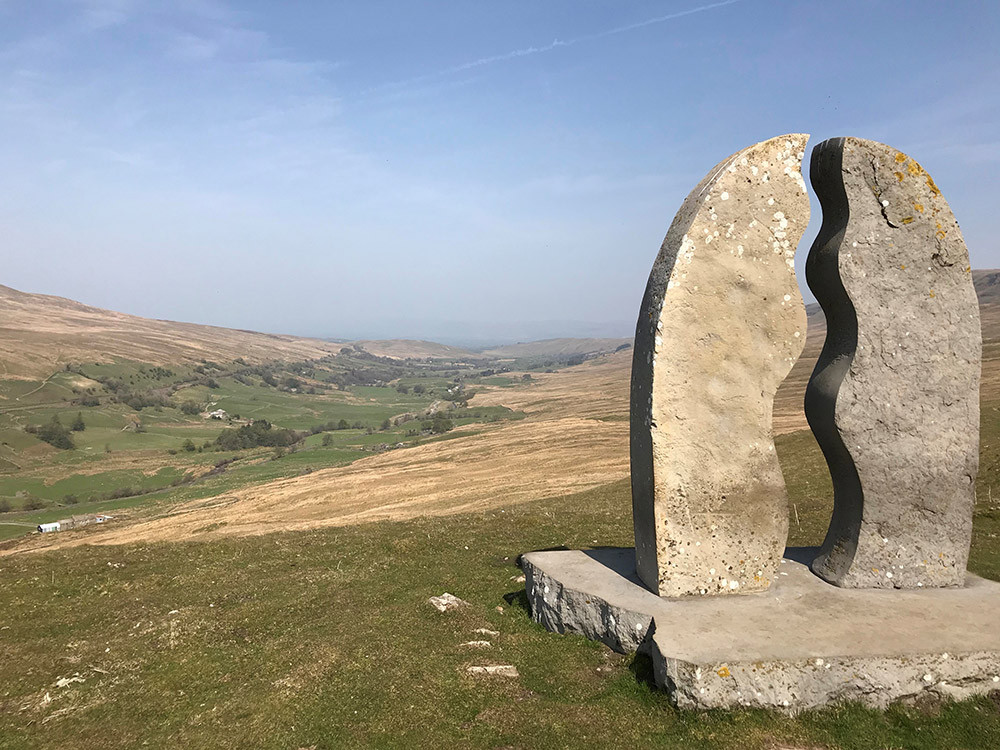
www.lakedistricttravelguide.co.uk
Discover art, sculpture and heritage along the 20-mile Ullswater Way
Explore the Lake District from our hotel right on the shores of Ullswater and footsteps from the Ullswater Way.